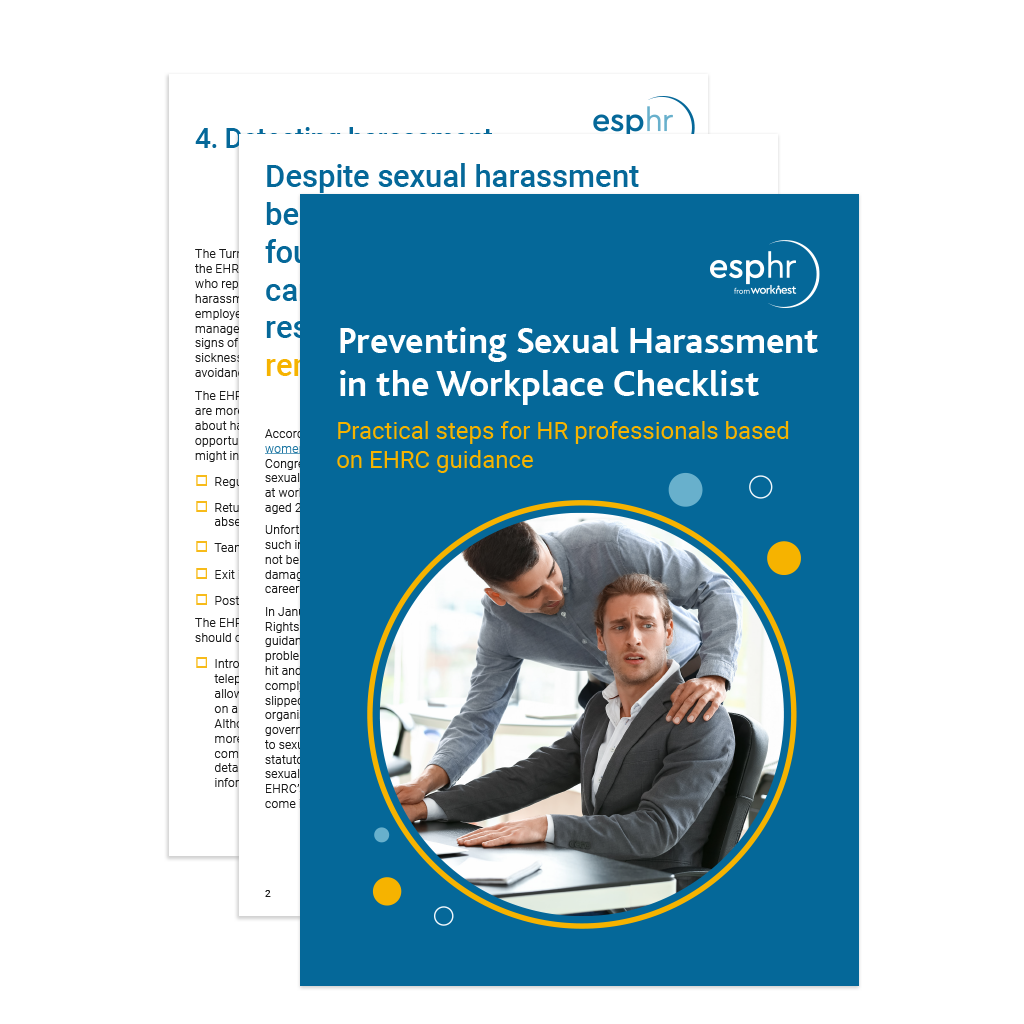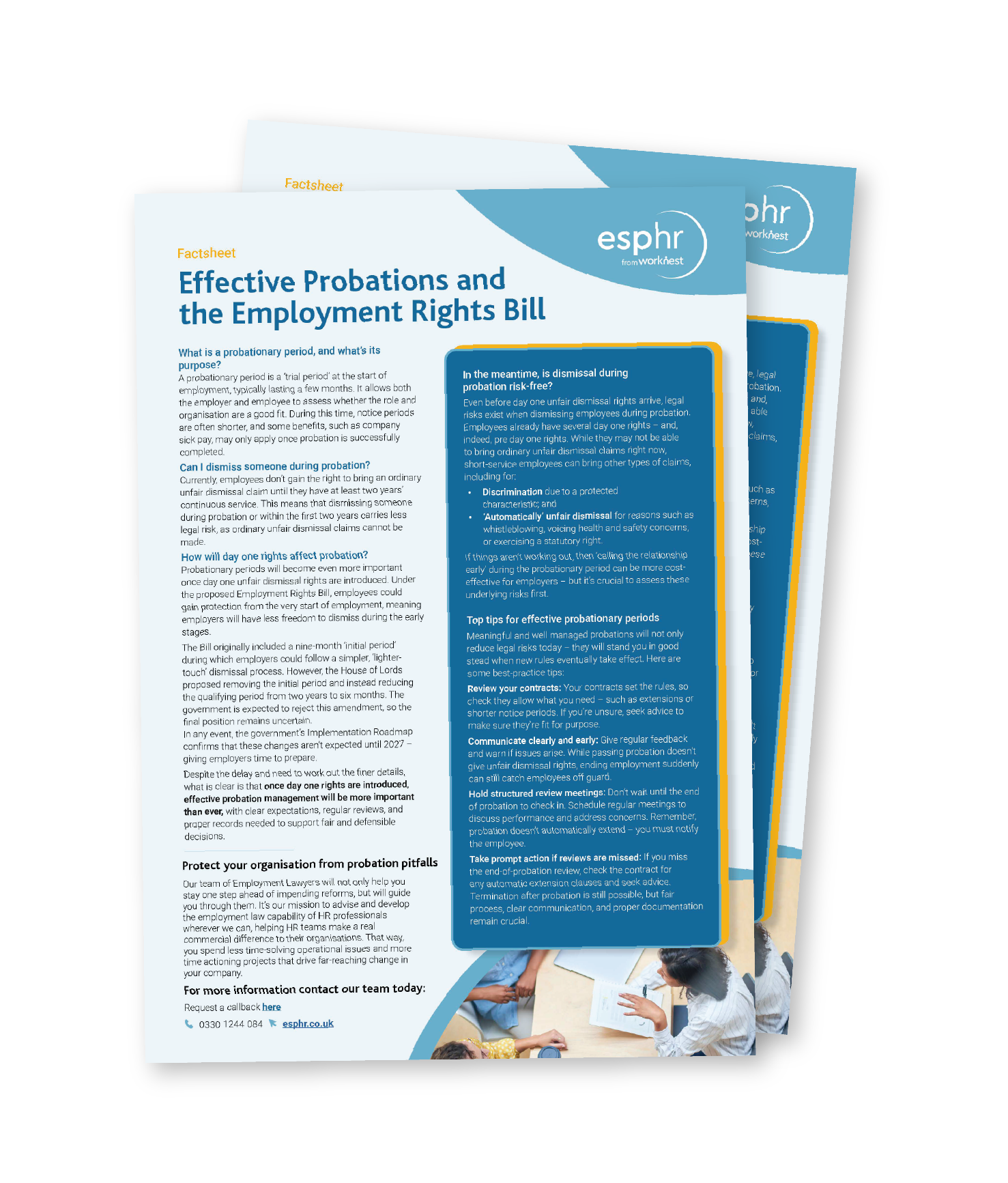From understanding the causes of short-term absence to creating effective absence management policies and procedures, this blog explores how to manage short-term sickness absence and provides practical tips and guidance to help HR do so effectively.
Why effective absence management matters
Managing employee absence, particularly short-term sickness, requires a structured approach. While occasional sick days are unavoidable, employers who actively monitor and address absences can minimise disruption and maintain workforce efficiency.
Timely intervention is crucial. A common mistake employers and HR professionals make is delaying action, which can lead to persistent absence issues. Addressing absences proactively not only supports employees but also reduces long-term costs.
How to manage short-term sickness absence
Short-term sickness absence should be dealt with in line with your sickness absence management policy and procedure. Having a well-defined policy in place and following it consistently can help you deal with absences fairly and efficiently while minimising legal risks.
It will also make employees aware of the standards of attendance that you expect from them, which may make employees think twice about calling in after a hectic weekend (particularly if you implement as part of your policy a return-to-work interview primarily to check on their welfare after every absence).
Monitoring attendance and managing absence concerns
The point at which you formally begin to manage attendance levels may be dictated by your absence management procedure. This is normally commenced after a period of absence that results in the employee reaching your policy’s trigger point.
To start the procedure, you should hold an investigation into the absence concerns. It’s important to:
- Discuss your concerns regarding the level of absence;
- Go through the employee’s attendance record to ascertain the reasons for the absences;
- Ask if there is an underlying reason or condition impacting the employee’s attendance at work; and
- If appropriate, discuss what support is needed and can be offered.
For first-time concerns, an informal letter of concern may be sufficient, setting out expectations for improvement while ensuring that any support that has been offered is put in place. However, you should make it clear that failure to meet these expectations may result in formal action.
If this is a recurring issue, you may wish to proceed to a formal meeting that could result in a formal outcome.
Again, any warning issued should be accompanied by the agreed support, a clear timescale for improvement, and specific recommendations to help the employee meet expectations. Additionally, outline the potential consequences if there is no progress within the set timeframe.
The importance of return-to-work interviews
Employers shouldn’t wait for absence levels to become problematic. One of the most effective tools in absence management is the return-to-work interview and they should not be underestimated. These discussions allow you to raise any concerns and explore if any underlying reasons for the employee’s absence, such as health-related or work-related issues.
Conducting return-to-work interviews after every absence – no matter how short -demonstrates that absences are being monitored and can act as a deterrent to unnecessary absences in the future.
How to deal with an employee who you suspect may not be genuinely sick
If you have concerns that an employee is lying about or exaggerating their illness or injury to avoid attending work:
- Ask them if they can provide any medical evidence – this is difficult if they have only been off for a couple of days with a minor illness, but if they claim to have been in hospital, they will likely have discharge paperwork.
- Consider the timeline. Had the employee requested the day off as a holiday, but had it rejected? Was there a deadline for a piece of work they may not have wanted to face?
- Get statements/evidence. Colleagues will often raise that they spotted the employee down the pub or saw on social media that they were away on holiday, at a house party, etc. during their absence. Obtain the screenshots or messages to use within your investigations.
- Investigate with the employee on their return to work.
Be careful not to jump to conclusions or make assumptions when dealing with employee sickness absence. This can undermine trust and confidence and could result in a constructive dismissal claim from the employee. Keep in mind that an employee who is absent due to illness may still be able to leave their home for non-work-related activities, such as running errands or visiting family. However, if an employee claims to have an illness that would prevent them from leaving their home and is observed in public places such as a bar or restaurant, this may require further investigation.
If you do have evidence to support the case that the absence may be bogus, you should deal with the matter under your disciplinary process rather than the absence management procedure.
Key Takeaways for Employers
• Implement a clear absence management policy
• Monitor attendance and intervene at appropriate trigger points
• Use return-to-work interviews to support employees and deter false absences
• Handle suspected dishonesty fairly and in line with your disciplinary procedures





